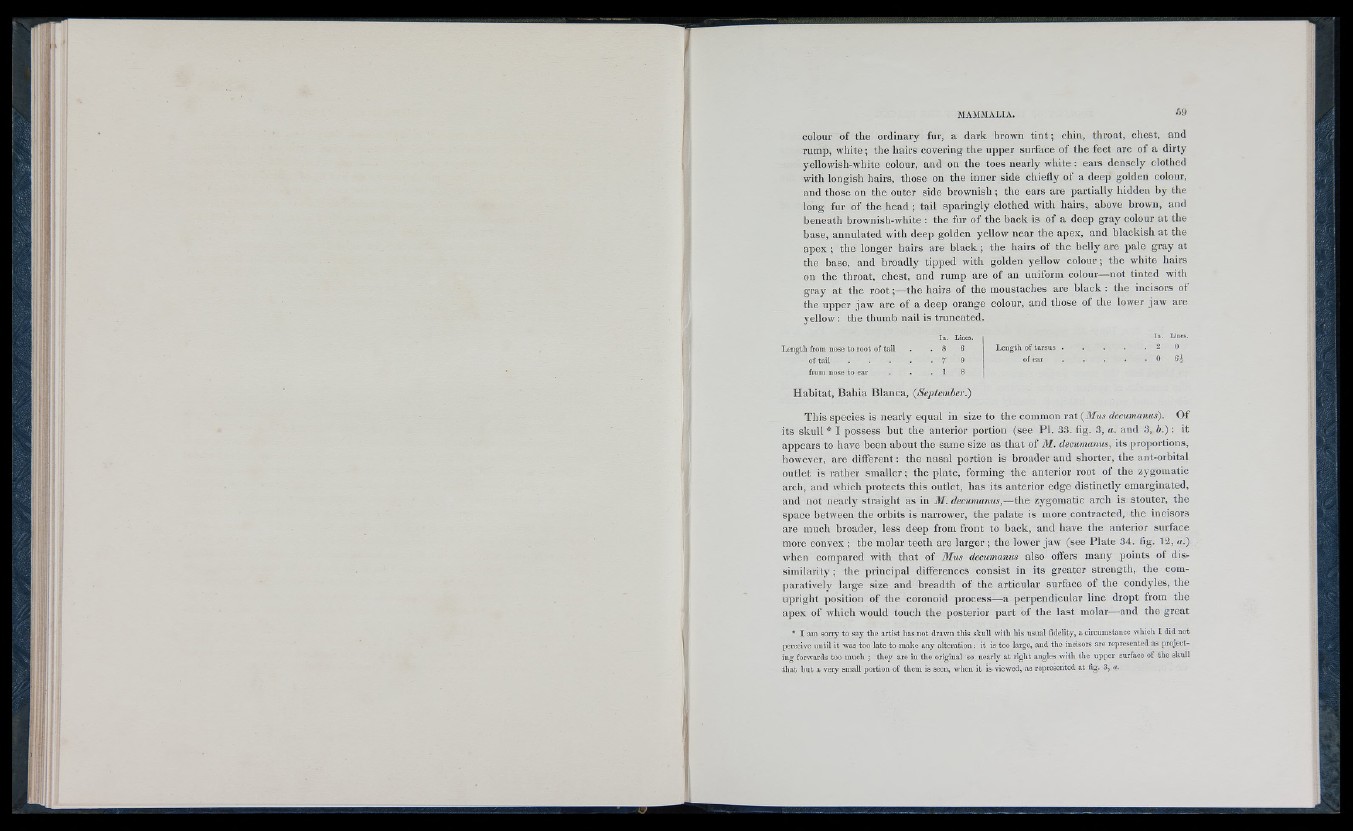
colour of the ordinary fur, a dark brown tin t; chin, throat, chest, and
rump, white; the hairs covering the upper surface of the feet are of a dirty
yellowish-white colour, and on the toes nearly white : ears densely clothed
with longish hairs, those on the inner side chiefly of a deep golden colour,
and those on the outer side brownish; the ears are partially hidden by the
long fur of the head ; tail sparingly clothed with hairs, above brown, and
beneath brownish-white ; the fur of the back is of a deep gray colour at the
base, annulated with deep golden yellow near the apex, and blackish at the
apex ; the longer hairs are black; the hairs of the belly are pale gray at
the base, and broadly tipped with golden yellow colour; the white hairs
on the throat, chest, and rump are of an uniform colour—not tinted with
gray at the root;—the hairs of the moustaches are black : the incisors ot
the upper jaw are of a deep orange colour, and those of the lower jaw are
yellow: the thumb nail is truncated.
Length from nose to root of tail
of tail
from nose to ear
Length of tarsns . . . . . 2 0
of c a r ..................................................0 64
Habitat, Bahia Blanca, (September.)
This species is nearly equal in size to the common rat (3Ius decumanus). Of
its skull* I possess but the anterior portion (see PI. 33. fig. 3, a. and 3, b .): it
appears to have been about the same size as that of 31. decumanus, its proportions,
however, are different: the nasal portion is broader and shorter, the ant-orbital
outlet is rather smaller; the plate, forming the anterior root of the zygomatic
arch, and which protects this outlet, has its anterior edge distinctly emarginated,
and not nearly straight as in 31. decumanus,—the zygomatic arch is stouter, the
space between the orbits is narrower, the palate is more contracted, the incisors
are much broader, less deep from front to back, and have the anterior surface
more convex ; the molar teeth are larger ; the lower jaw (see Plate 34. fig. 12, a.)
when compared with that of 3Ius decumanus also offers many points of dissimilarity
; the principal differences consist in its greater strength, the comparatively
large size and breadth of the articular surface of the condyles, the
upright position of the coronoid process—a perpendicular line dropt from the
apex of which would touch the posterior part of the last molar—and the great
* I am sorry to say the artist has not dra\vu this sknll w ith his usual fidelity, a circumstance which I did not
perceive until it was too late to make any alteration: it is too largo, and the incisors are represented as projecting
forwards too much ■, they are in the original so nearly at right angles w ith the upper surface of the skull
th at but a very small portion of them is seen, when it is viewed, as represented at fig. 3, a.